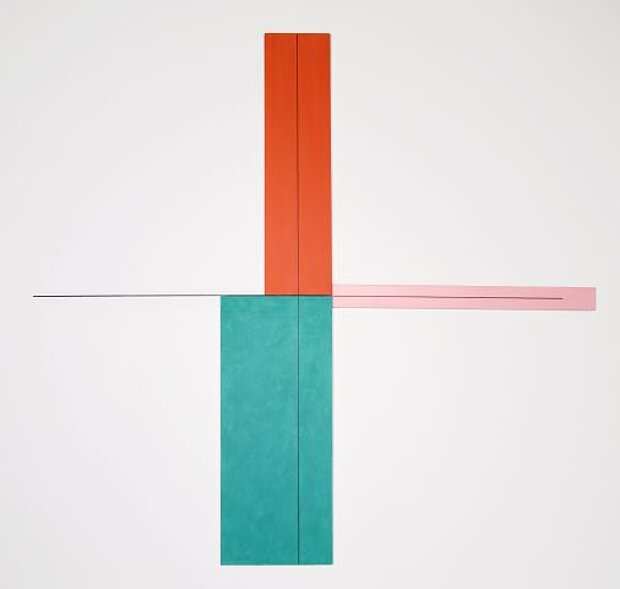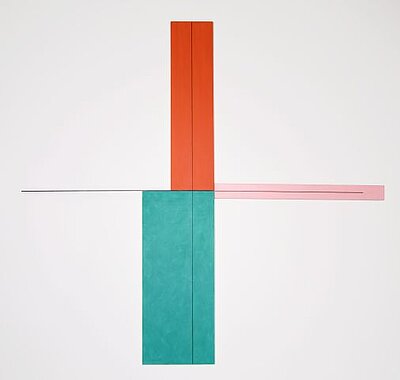
Mangold, Robert
Plus Minus Painting
1982

© mumok
| Object description | Acrylic on molino, aluminum |
|---|---|
| Object category | sculpture |
| Dimensions |
Objektmaß:
height: 152,5 cm,
width: 64 cm,
depth: 4 cm
|
| Year of acquisition | 1985 |
| Inventory number | B 656/1 |
| Creditline | mumok - Museum moderner Kunst Stiftung Ludwig Wien |
| Rights reference | Bildrecht, Wien |
| Further information about the person | Mangold, Robert [GND] |
At a time when many artists were turning from painting to minimal art, US American artist Robert Mangold declared his commitment to the former. He said: “There was a point in 1964 when everyone declared painting to be dead. Sculpture appeared to be a much more exciting area. I became convinced that what I really wanted to deal with were flat surfaces on walls.” As he says, Robert Mangold is interested in paintings as flat surfaces on walls, but there is more to it, as he conceives of the wall as an integral part of the work and includes it in his compositions. One of the constant characteristics of his entire oeuvre is the shaped canvas. This allowed him to create works which can be both paintings and objects. In the case of the 1982 work Plus Minus Painting, three colored picture elements of differing breadths and a metal rod are united to form a cross. The cross or plus sign is visible as a metal rod on the right and otherwise as painted lines on the canvas. These lines form a structure that divides the color areas of the canvas into smaller segments, and also the white wall round about it. Over and above its individual elements, the work “expands” to take over the wall of the exhibition space, melding with it and becoming an inseparably compounded whole. Mangold’s geometrical abstractions are based on a precisely calculated dialectical analysis of the elements that determine the picture: color and surface, line and form. The artist observed this accomplishment most notably in the work of Piet Mondrian, whose work he deeply admired. Seen from this perspective, Plus Minus Painting can be read as an homage to the co-founder of De Stijl, who composed pictures at the beginning of the twentieth century based on the relationships between vertical and horizontal lines.
© mumok – museum moderner kunst stiftung ludwig wien
